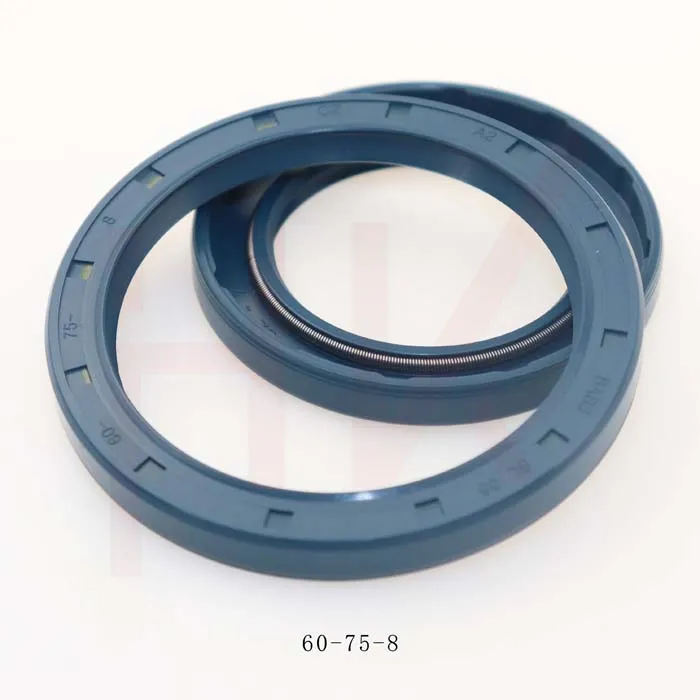Aug . 20, 2024 01:49 Back to list
Hydraulic Cylinder Seal Kit Material Options and Considerations for Optimal Performance
Understanding Hydraulic Cylinder Seal Kit Materials
Hydraulic systems play a crucial role in a wide range of industries, from manufacturing to construction. At the heart of these systems are hydraulic cylinders, which convert hydraulic energy into mechanical force. A critical component of hydraulic cylinders is the seal kit, which ensures efficient operation by preventing fluid leaks and maintaining pressure. Selecting the right materials for hydraulic cylinder seal kits is essential for optimizing performance and extending the lifespan of the equipment.
The Importance of Seal Kits
Seal kits are designed to create a barrier that prevents hydraulic fluid from leaking out of the cylinder while also keeping contaminants from entering. This is vital for maintaining the hydraulic fluid's pressure and ensuring the smooth operation of the machinery. A compromised seal can lead to inefficiencies, increased maintenance costs, and even catastrophic system failures. Therefore, it is imperative to understand the materials used in these seals, as they directly influence the performance and durability of hydraulic systems.
Common Seal Kit Materials
1. Nitrile Rubber (NBR) Nitrile rubber is one of the most commonly used materials in hydraulic seal kits. Known for its excellent resistance to petroleum-based fluids, NBR can withstand a wide range of temperatures. Its durability and elasticity make it an ideal choice for various hydraulic applications. However, NBR may not perform well in extreme temperatures or with certain chemicals, which limits its use in specialized environments.
2. Hydrogenated Nitrile Rubber (HNBR) HNBR is a modified version of NBR, offering improved heat, ozone, and chemical resistance. This material is particularly suitable for high-pressure applications where temperature fluctuations are common. HNBR seals have superior wear resistance, making them a popular choice in demanding industrial environments.
3. Fluoroelastomer (FKM) Fluoroelastomers are known for their excellent chemical resistance and temperature stability, making them suitable for applications involving aggressive fluids and high heat. While FKM seals can be more expensive than rubber options, their longevity and reliability in harsh conditions often justify the investment.
hydraulic cylinder seal kit material

4. Polyurethane (PU) Polyurethane seals have gained popularity due to their outstanding abrasion and tear resistance. They are often used in applications where high performance and durability are required. However, polyurethane may not perform well in all chemical environments, particularly those involving water or certain oils.
5. Teflon (PTFE) Teflon seals are known for their low friction properties and outstanding chemical resistance. While they can be used alone or as coating materials, Teflon seals are often applied in conjunction with other materials to enhance their performance. Teflon is especially useful in applications that require minimal friction or sliding motion.
Choosing the Right Material
Selecting the right seal kit material involves considering several factors, including the type of fluid being used, temperature ranges, pressure levels, and the presence of potential contaminants. It’s also essential to evaluate the operational environment, as factors such as humidity, ozone exposure, and UV light can affect seal performance.
Manufacturers often provide guidelines for selecting appropriate seal materials based on the specific application and environmental conditions. Consulting with experts in the field can also assist in making informed choices, ensuring that hydraulic systems function efficiently and reliably.
Conclusion
In conclusion, the choice of materials for hydraulic cylinder seal kits plays a pivotal role in the efficacy and longevity of hydraulic systems. Understanding the unique properties of materials such as NBR, HNBR, FKM, PU, and PTFE allows for informed decision-making, ultimately leading to improved performance, reduced maintenance costs, and enhanced reliability of hydraulic machinery. By investing in high-quality seal kits made from appropriate materials, industries can ensure their hydraulic systems remain operational despite the challenges presented by demanding operational environments.
-
TCN Oil Seal Metal Ring Reinforcement for Heavy Machinery
NewsJul.25,2025
-
Rotary Lip Seal Spring-Loaded Design for High-Speed Applications
NewsJul.25,2025
-
Hydraulic Cylinder Seals Polyurethane Material for High-Impact Jobs
NewsJul.25,2025
-
High Pressure Oil Seal Polyurethane Coating Wear Resistance
NewsJul.25,2025
-
Dust Proof Seal Double Lip Design for Construction Equipment
NewsJul.25,2025
-
Hub Seal Polyurethane Wear Resistance in Agricultural Vehicles
NewsJul.25,2025
-
The Trans-formative Journey of Wheel Hub Oil Seals
NewsJun.06,2025
Products categories
















